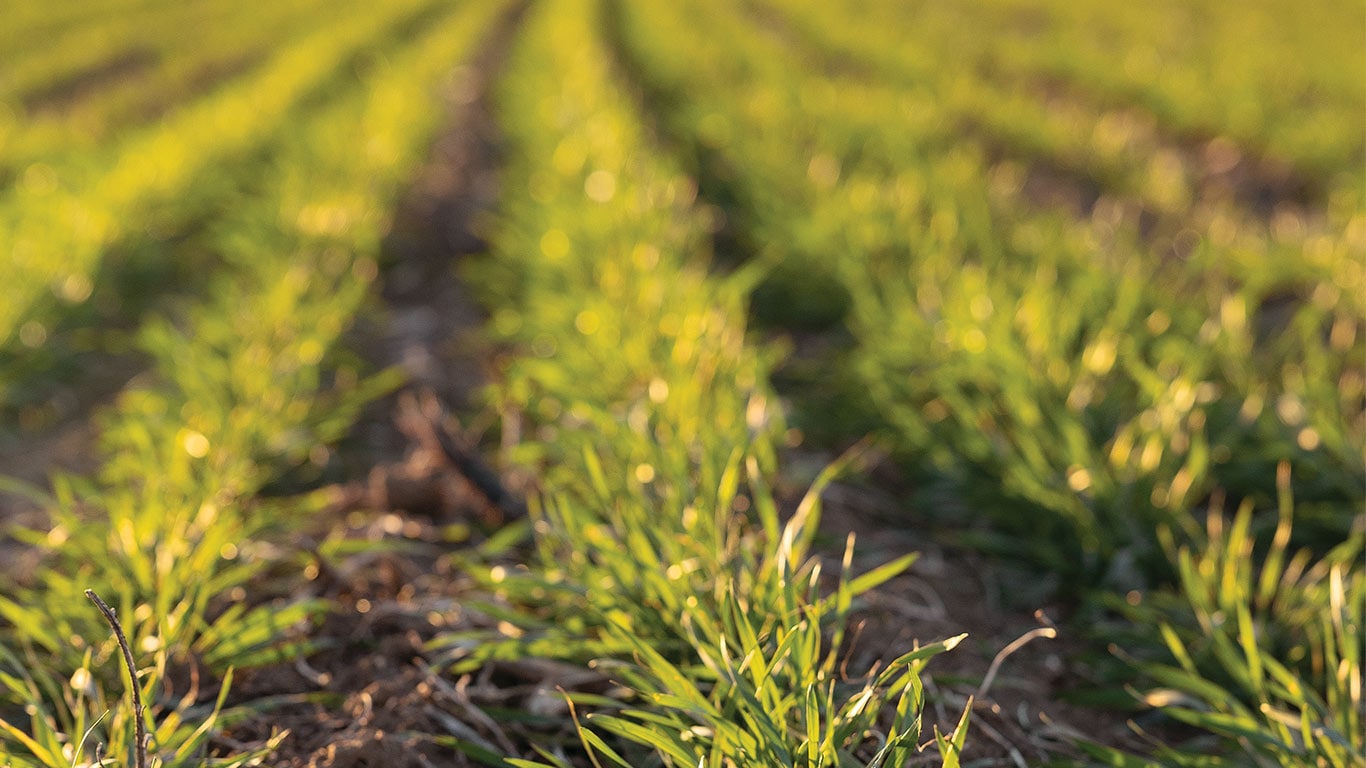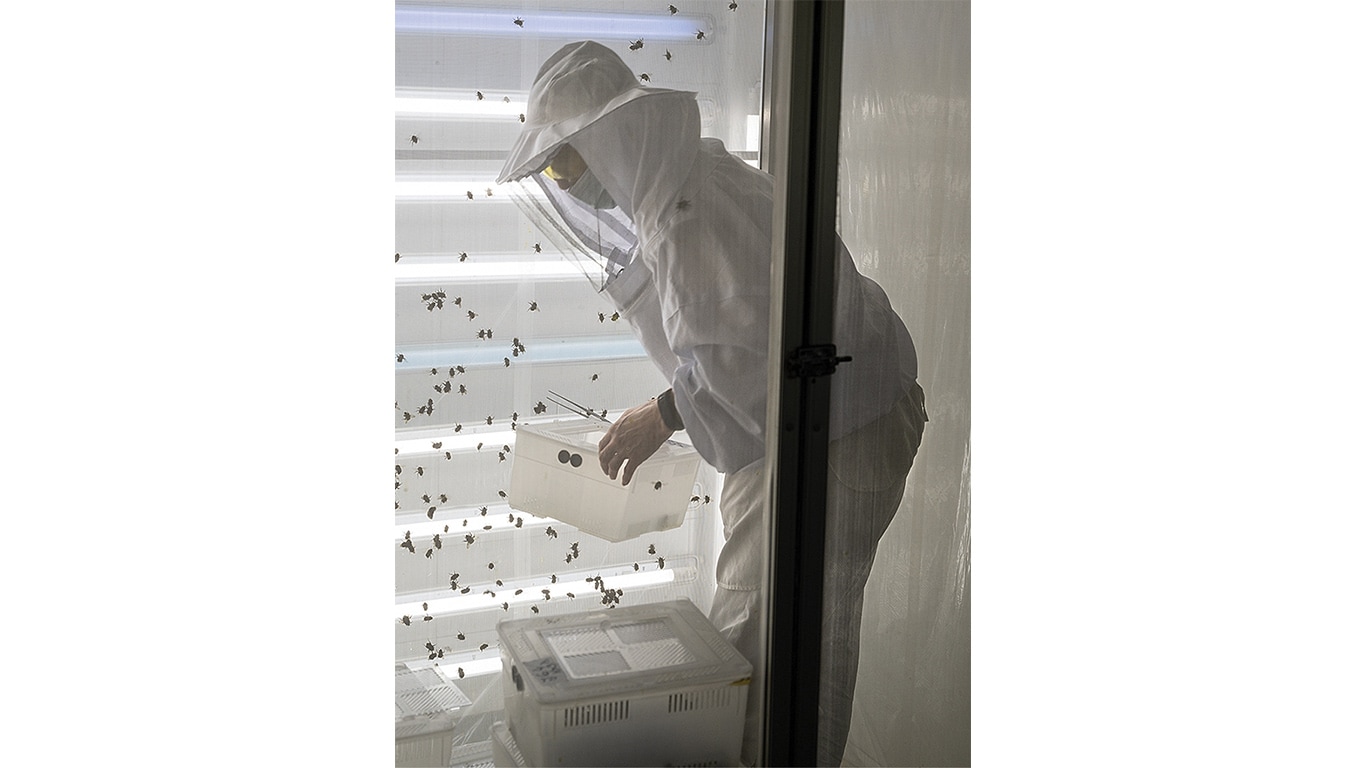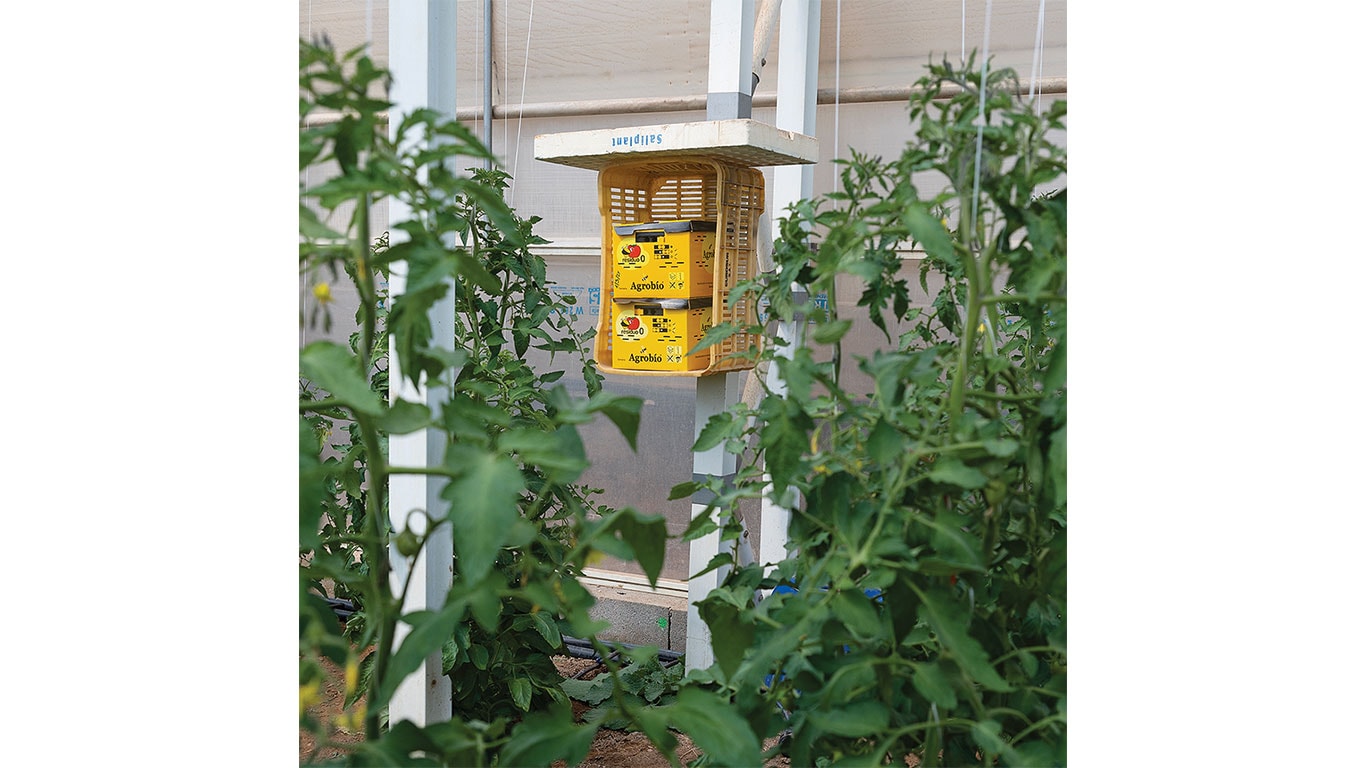Agriculture, Sustainability September 01, 2025
A Bigger Buzz
The humble bumble bees' story.
by Katie Knapp
In a greenhouse at Ohio State University Dr. Jamie Strange watches as bumble bees visit tomato flowers, performing their specialized 'buzz pollination' technique called sonication. "They bite the flowers and then vibrate their flight muscles to release the pollen," he explains. "After they are done, you can see the scar and the bite mark on the flowers."
These fuzzy pollinators are remarkably efficient.
During a USDA-funded trial, a single colony was placed in a 400-square-foot greenhouse with approximately 50 tomato plants. "They had visited every flower in just two days," Strange says, admitting how impressed he was at the speed.
This efficiency translates directly to yield, especially for plants like tomatoes, peppers, and cucumbers. This is true whether they are grown in large, glass greenhouses or smaller high tunnels.
"If you're going to grow in a greenhouse, you're going to have bumble bees," says Strange, who chairs OSU's Department of Entomology. "Studies I did with USDA funding show you get about 15% more yield. Fruit weight also goes up with bumble bee pollination."
He adds, "A colony costs a couple hundred dollars, so it is an obvious choice for these producers."
Most commercial bumble bee colonies pollinating greenhouse-grown produce year-round are raised in a handful of climate-controlled production facilities. There are just two in North America, one in Michigan and one in Ontario.
Commercial bumble bee colonies typically come with 80-200 workers in self-contained boxes. They require minimal management—just place the box away from high traffic paths, open it, and the bees do the rest. North American suppliers can generally ship a new colony to a farm within a couple weeks of ordering.
Above. Dr. Jamie Strange has researched bumble bees for more than 20 years. Once a queen has been fertilized in a production facility, a new colony can be established in weeks and shipped in self-contained boxes that require minimal management once in place.
Buzzing outside. Deciding to invest in commercial bumble bees becomes more nuanced for field crops. For early crops like blueberries that tend to flower before native colonies have fully developed, adding a few commercial colonies can be good insurance.
"At this point queens are out foraging and trying to establish their colonies, but there aren't many workers yet," Strange explains. "Some blueberry growers will put both bumble bees and honey bees at the same site, just to make sure they get good pollination."
Later flowering crops don't benefit as much from adding commercial colonies.
"Together with Penn State entomologists, we sampled bees across pumpkin fields and found in some cases more than 200 native colonies contributing workers," Strange says. "Growers adding one or two commercial colonies may be wasting money."
Strange recommends adding more conservation practices rather than purchasing colonies for these situations. "Planting wildflower strips along field edges, reducing pesticide use during bloom, and maintaining natural habitat can support existing wild bumble bee populations."
More buzzing questions. Just like their honey-producing counterparts, native and commercial bumble bees are susceptible to environmental hazards. This vulnerability is prompting deeper research.
Scientists in bee labs at OSU and other universities, along with the U.S. Fish and Wildlife Service, are studying things like ideal nutrition, pathogen control, and habitat requirements for both commercial and wild populations.
"There's a balance to strike," Strange reflects. "We have real food security needs, but also environmental concerns with wild bee populations. Finding ways to meet both challenges is what makes this work exciting." ‡
Read More

AGRICULTURE, EDUCATION
In Search of Maximum Wheat
Prioritize yield by focusing on the basics.

AGRICULTURE, EDUCATION
Fields of Evidence
Ohio farmers are turning their operations into living laboratories.




